
Refrigerator Troubleshooting: Possible Solutions for Fixing 7 Problems
We rely on our refrigerators for a lot. When something goes wrong with refrigerator parts, they usually needs to be fixed right away. Some issues can be solved with a DIY repair, while others will need the attention of a professional. Before scheduling a service call, run through this list of refrigerator troubleshooting options to get your appliance back to peak performance as quickly as possible.
Select your issue to see some possible simple solutions. Always check your refrigerator’s Use and Care Guide for model-specific troubleshooting instructions.
1. The Refrigerator Isn’t Cooling but the Light Is On
There may be a simple reason why your fridge isn’t as cold as you expect or your freezer isn't freezing. If it’s just been installed, you’ve recently loaded in a lot of food or the doors have been opened a lot that day, you may need to wait up to 24 hours for the temperature to drop back down. If not, run through these other steps to narrow down the cause.
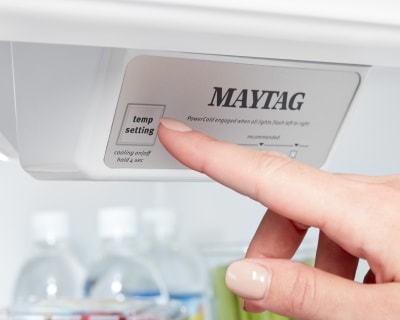
Adjust the Fridge’s Temperature
The recommended temperature for the refrigerator is 37°F and the freezer 0°F. But, if your refrigerator is located next to a heat source or in a room that’s warmer than usual, you may need to adjust the temps from the factory settings.
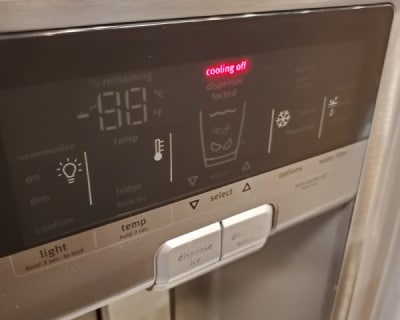
Check the Refrigerator Settings
A setting that restricts cooling could have been accidentally turned or left on. For example, many refrigerators have a “Cooling On/Off” setting, a “Power Outage” setting that kicks in after a power outage or a “Showroom Mode” that will need to be turned off when you bring the refrigerator home.
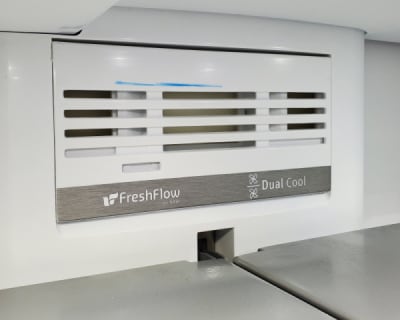
Check If the Fridge’s Vents Are Obstructed
There should be vents somewhere in your refrigerator that promote air flow from the freezer to the fridge and keep things cool. Make sure these aren’t blocked by food items as this can cause food in the fridge to freeze.
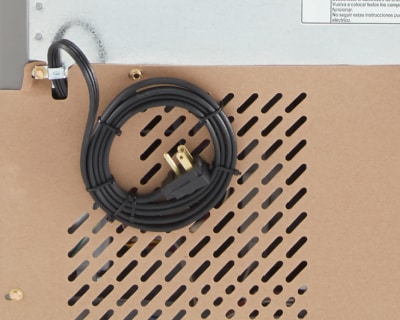
Will Unplugging a Refrigerator Reset It?
Simply unplugging a refrigerator will not reset it; in order to reset your refrigerator on most models, you must leave it unplugged for at least five to ten minutes. If unplugging your fridge and letting it rest before plugging it in again does not reset your appliance, you will likely need to consult your product’s owner’s manual or schedule a repair with a professional.
Still looking for answers? Find more cooling troubleshooting info on Maytag Product Help.
2. The Ice Maker Isn’t Making Enough Ice
A standard ice maker should produce about three pounds of ice a day. If your refrigerator was just installed, it may take 24 hours for ice production to begin and up to three days for full ice production. If a large amount was recently removed, it could take 24 hours to fully replenish. If your ice maker isn’t making enough ice, try these three things before contacting a professional:
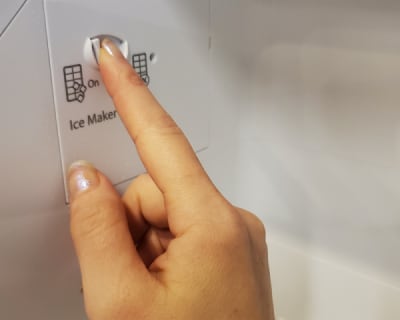
Make Sure the Ice Maker is Turned On
Sometimes an ice maker can get accidentally turned off. Turn it back on by turning the dial to “Ice Maker On” or moving the lever over the ice bin down.
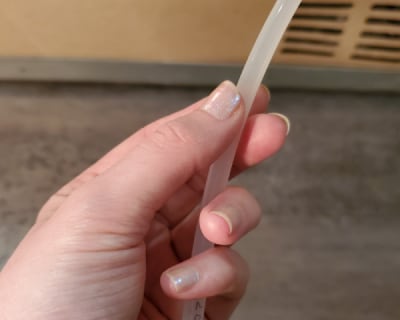
Check If the Fridge’s Water Line is Kinked
Locate the water line behind the fridge. If it’s looped or kinked, straighten it to enhance water flow. Learn more about how to fix an ice maker that’s leaking.
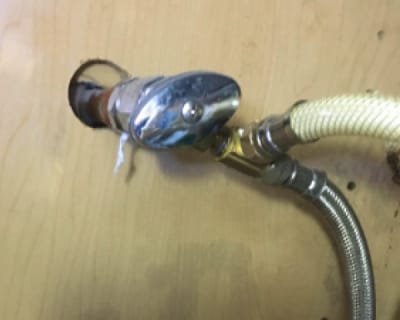
Make Sure the Water Shut-Off Valves Are Fully Open
Double check that the refrigerator is connected to the water supply in the back of the fridge. If so, make sure all water shut-off valves are fully open. The main valve is usually located under the sink, in the cabinet next to the refrigerator or in the basement, while additional valves may exist in the tubing.
Still looking for answers? Find more ice maker troubleshooting info on Maytag Product Help and learn how a refrigerator ice maker works.
3. Condensation in the Fridge or Frost in the Freezer
A minimal amount of condensation and moisture is normal, especially during higher humidity conditions. To avoid excess moisture buildup, limit door openings. Get all items out at one time, keep food organized and close the door as soon as possible. If you’re still noticing excess moisture, run through these three steps:
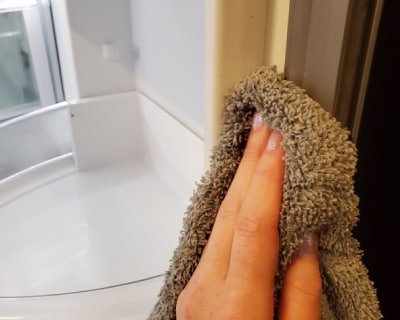
Wipe Down the Fridge Door Seal Gasket
Sometimes food pieces and soil can accumulate on the door seals, so wipe these down with a simple cloth, water and soap.
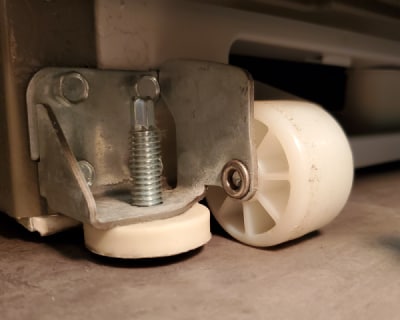
Check that the Refrigerator Is Level
An unlevel fridge can cause the doors to close improperly, letting humidity in. It can be unlevel if it wasn’t installed properly or the floor itself is unlevel, causing the fridge to lean. Use a level to measure from front to back and side to side, then adjust the leveling legs as necessary.
Still looking for answers? Find more moisture troubleshooting info on Maytag Product Help or learn about how to prevent frost or ice crystals on food.
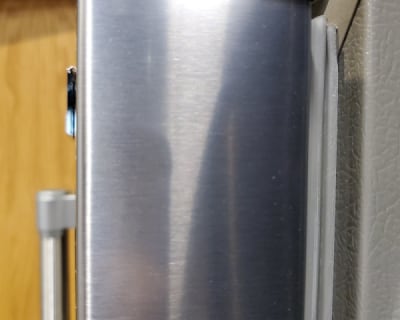
Make Sure the Refrigerator Door Is Sealed Properly
Ensure door seals are making full contact with the refrigerator, so no humidity can sneak in. If they’re not, check that nothing is obstructing the door. If the fridge is properly leveled, you will want to make sure the doors are correctly adjusted by referring to your owner’s manual (the refrigerator cannot seal if its doors are not aligned).
4. The Refrigerator Is Making Noise
There are many reasons why your refrigerator is making noise, some of which are a part of normal operations. However, if you believe your refrigerator is making unnatural noises, try cleaning its condenser coils. Normally, routine cleaning is not required for condenser coils, but when they become especially greasy or dusty, this can cause a loud humming noise. Check your owner’s manual for more information on how to clean your fridge’s condenser coils.
| NOISE | POSSIBLE CAUSES | SOLUTIONS |
|---|---|---|
| Vibration | The refrigerator may not be steady |
Adjust the leveling screws and lower the leveling foot firmly against the floor |
| Rattling/Banging |
Movement of the water lines against the refrigerator cabinet, or of items placed on top of the refrigerator cabinet | Move excess water line away from the refrigerator cabinet or fasten excess tubing to the cabinet |
| Sound of the compressor running longer than expected | High efficiency compressor and fans | This is normal; larger, more efficient refrigerators run longer |
| Pulsating/Whirring |
Fans/compressor adjusting to optimize performance during normal compressor operation | This is normal |
| Popping | Contraction/expansion of inside walls, especially during initial cool-down |
This is normal |
| Hissing/Dripping |
Flow of refrigerant, or flow of oil in the compressor |
This is normal |
| Sizzling | Water dripping on the heater during defrost cycle |
This is normal |
| Water running/Gurgling |
May be heard when ice melts during the defrost cycle and water runs into the drain pan |
This is normal |
| Buzzing | Heard when the water valve opens to fill the ice maker |
This is normal |
| Creaking/Cracking |
May be heard as ice is being ejected from the ice maker mold |
This is normal |
| Ker-plunk |
May be heard when the ice falls into the ice storage bin |
This is normal |
5. The Water Dispenser Isn’t Working Properly
If your refrigerator has just been installed, you’ll need to connect it to the water supply and flush the system (see instructions below) to promote a good flow and prevent leaks. Also, allow 24 hours after installation for the water to become cold. Another reason for dispenser problems could be low water pressure to your house, which should be at or above 35 psi. Try these three things if your water dispenser is clogged and you’re still having issues:
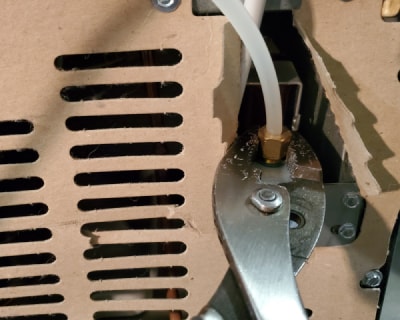
Check the Fridge’s Water Supply Connection
Make sure the fridge is connected to the water line properly. It should be located on the back of the fridge toward the bottom. Tighten it with a wrench if it’s already connected.
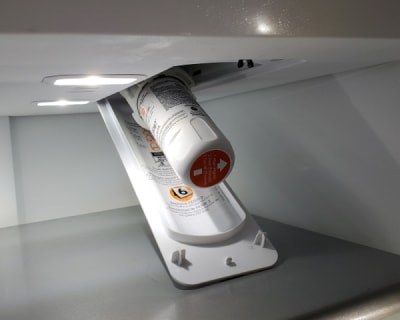
Check the Water Filter
Remove the water filter and operate the dispenser. If water flow increases, the filter may have been clogged or installed incorrectly. Learn how to replace and install water filters in under 5 minutes.
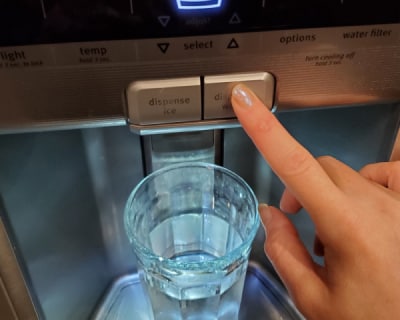
Flush the Refrigerator’s Water System
Flushing the water system forces air from the water line after the refrigerator has been installed or the water filter has been replaced. Use a sturdy container to press and hold the water dispenser pad for 5 seconds, then release it for 5 seconds. Repeat until water begins to flow. Continue pressing and releasing the dispenser pad (5 seconds on, 5 seconds off) until a total of 3 gallons (12 L) of water has been dispensed.
Still looking for answers? Find more water dispenser troubleshooting info on Maytag Product Help.
6. The Compressor Is Short Cycling
Short cycling is a process whereby your refrigerator’s compressor is cycling on and off much too often. When this happens you might hear a frequent clicking sound as the compressor restarts. A short cycling compressor is a pressing issue: because even though your food will likely still be chilled, your energy consumption will increase. If you think your compressor is short cycling, it’s time to contact a professional.
7. The Fridge Light Is Not Working
If your fridge light is not working, one likely explanation is that the bulb has burned out. In newer refrigerators, these bulbs are LEDs that do not need to be replaced; however, if your fridge carries a traditional light bulb, make sure it is tight in its socket. When changing your light bulb, make sure to exchange it for a bulb that is the same size, shape and wattage as the previous bulb.
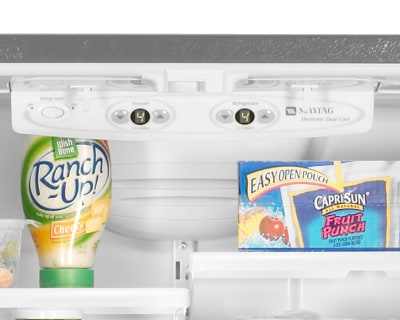
Check that the Door Switch Is Activated
In order for your light bulb to turn on, it typically requires a door switch to be activated. For most refrigerators, you can locate this switch at either the top or bottom of the door’s opening. To ensure this switch is operating correctly, check the alignment of the refrigerator doors and remove any magnets or electronic devices near the door switch.
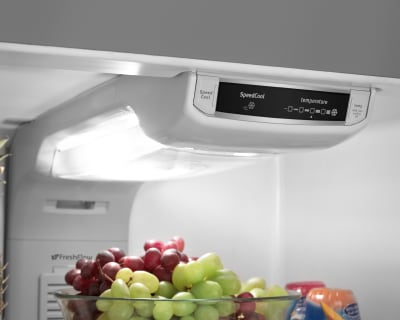
Cycle Power
If your fridge light isn’t working, you can try disconnecting power to your refrigerator for one minute to cycle power in your appliance. With luck, the fridge light will turn back on when the power is restored.
Need More Help with Refrigerator Repair?
Even if you don’t have a Maytag, search the Maytag® refrigerator help page to find answers to your issues. If you do have a Maytag® refrigerator and need professional repair help, call 1-800-344-1274 to schedule service.
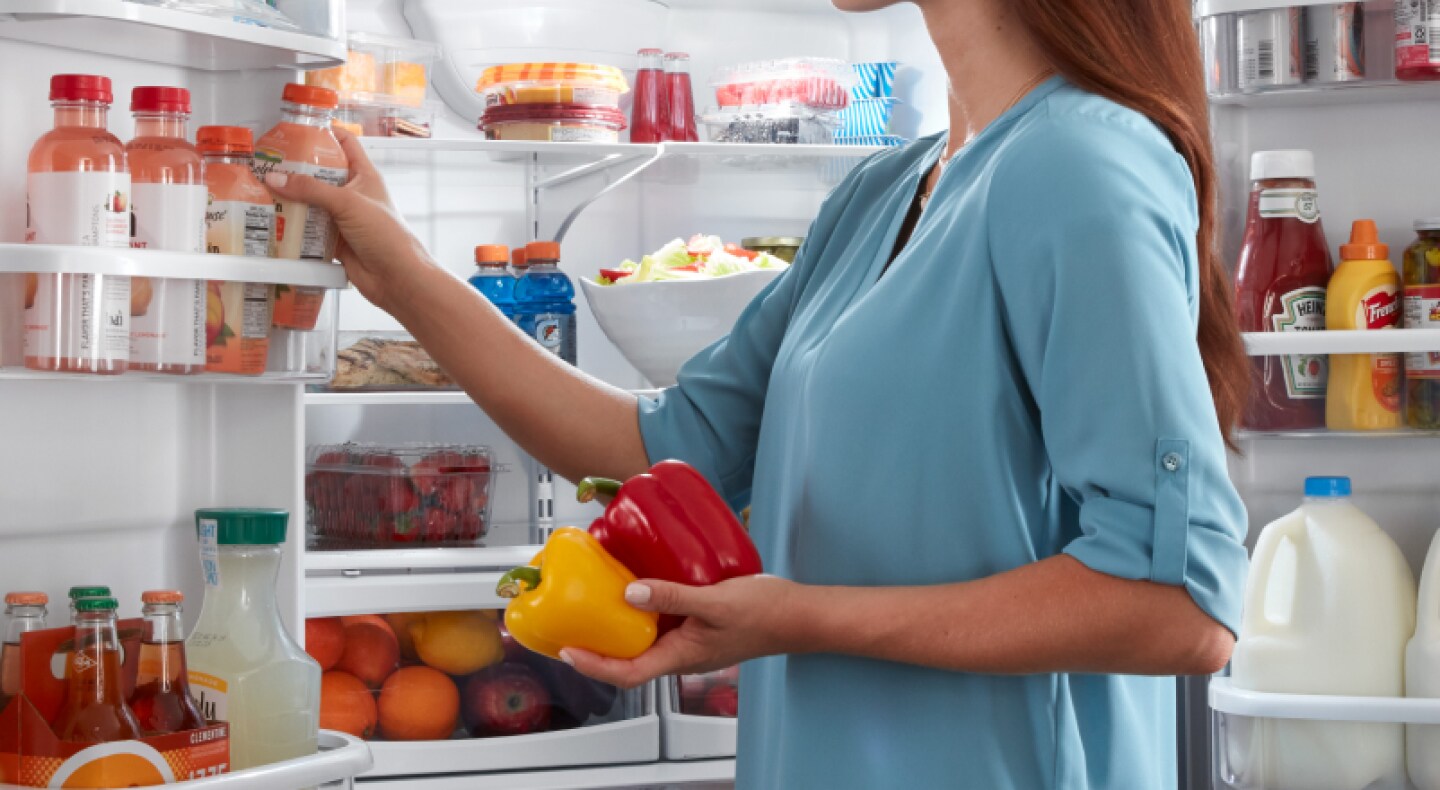
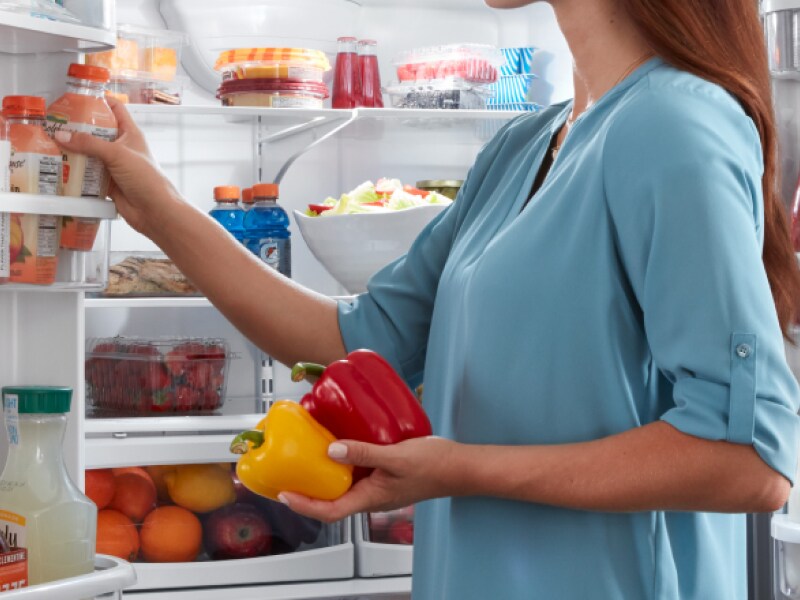
Shop for Maytag® Refrigerators
If it's time for a refrigerator upgrade, look no further than the wide selection from Maytag brand. With features designed for control, durability and convenience, you can count on a Maytag® refrigerator for your storage and refrigeration needs.
More Info to Keep Your Refrigerator Running Right
-
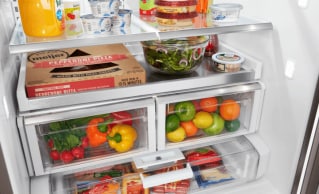 11 Refrigerator Organization Ideas and Tips Get inspired to start organizing your fridge with these refrigerator organization ideas and tips. Learn how to organize fridge shelves, drawers, doors and more.
11 Refrigerator Organization Ideas and Tips Get inspired to start organizing your fridge with these refrigerator organization ideas and tips. Learn how to organize fridge shelves, drawers, doors and more. -
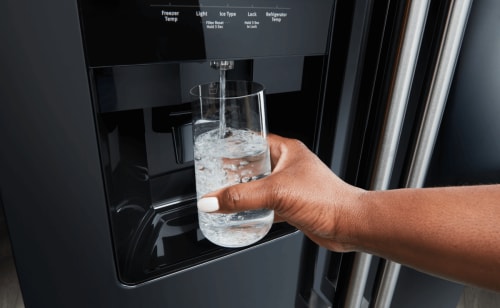 How to Replace Your Refrigerator Water Filter Learn how to change your refrigerator’s water filter with step-by-step instructions. Get tips for replacing a fridge water filter quickly and easily.
How to Replace Your Refrigerator Water Filter Learn how to change your refrigerator’s water filter with step-by-step instructions. Get tips for replacing a fridge water filter quickly and easily. -
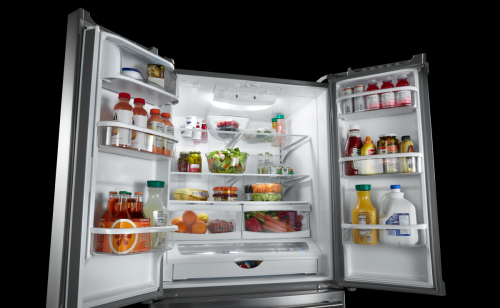 How Does a Refrigerator Work? Your fridge's cooling cycle works continuously to keep food fresh. Learn how a refrigeration system works, step by step.
How Does a Refrigerator Work? Your fridge's cooling cycle works continuously to keep food fresh. Learn how a refrigeration system works, step by step.
